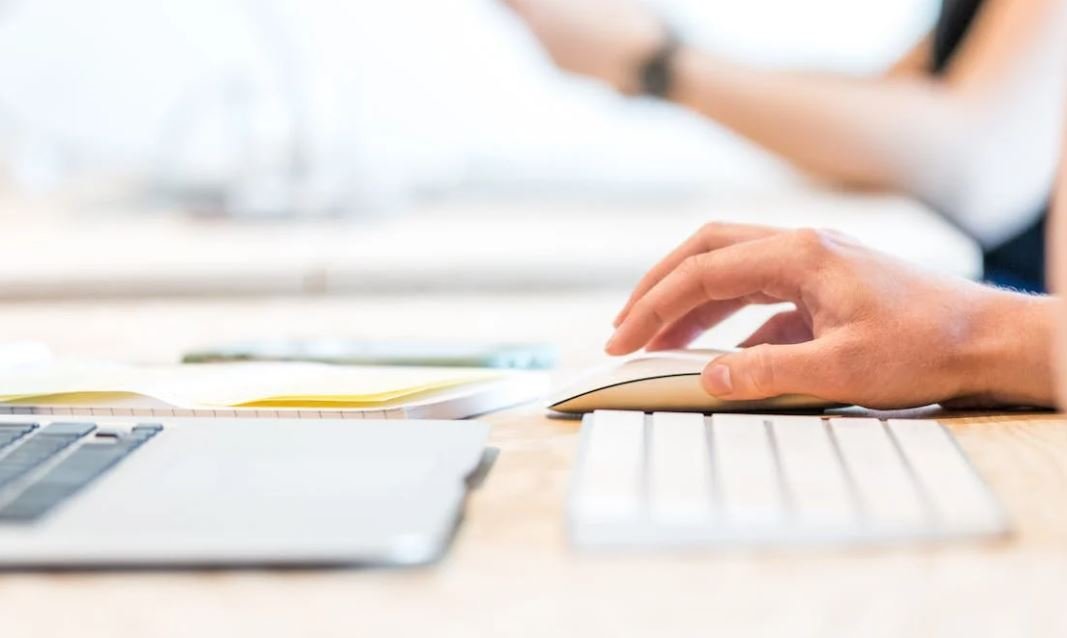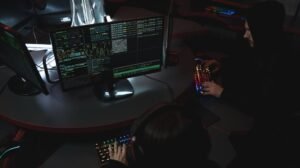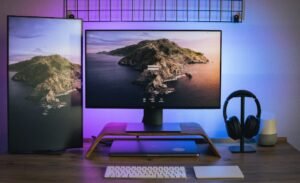Training AI Art Generator
Artificial Intelligence (AI) has become an indispensable tool in various industries, including the creative arts. With the advancement in AI technology, it is now possible to train an AI art generator to create stunning works of art. By teaching the AI program to recognize patterns, style, and aesthetics, it can produce original artwork that imitates different artistic styles or even creates unique pieces.
Key Takeaways
- AI art generators are trained to produce artwork using machine learning algorithms.
- These programs can imitate existing artistic styles or generate completely new and original art.
- Training an AI art generator requires a large dataset of artwork and extensive computational resources.
To train an AI art generator, a large dataset of artwork is required. This dataset serves as the foundation for the AI program to learn and create new pieces. The more diverse and extensive the dataset is, the better the AI can understand different artistic styles and create unique compositions. This training process involves feeding the AI algorithm with a vast amount of data, allowing it to identify patterns, color palettes, brush strokes, and other artistic elements to generate visually appealing artwork.
Training Process
The training process involves two main steps:
- Data preprocessing: This step involves cleaning and organizing the art dataset. Images are resized, normalized, and labeled to ensure consistency and improve the training accuracy.
- Machine learning: Once the dataset is prepared, the AI algorithm goes through an iterative process of training. Each iteration involves adjusting the internal model parameters based on the errors and patterns identified in the previous iteration. This process continues until the AI art generator produces satisfying results.
Training an AI art generator can be a time-consuming process, depending on the size of the dataset and the complexity of the desired output.
Data and Processing Requirements
| Aspect | Requirement |
|---|---|
| Data | A large and diverse dataset of art samples. |
| Computational Resources | High-performance GPUs and extensive memory to handle the complex computations. |
| Storage | Adequate storage capacity to accommodate the large dataset and generated artwork. |
The training process of an AI art generator requires significant computational resources. High-performance GPUs are essential for accelerating the deep learning algorithms used in creating the artwork. Additionally, extensive memory is required to handle the vast amount of data involved in training the AI. Adequate storage capacity is also necessary to store the large dataset and the generated artwork.
Benefits of AI Art Generators
AI art generators offer several benefits:
- Inspiration: AI-generated artwork can inspire human artists by introducing new styles and perspectives.
- Time-saving: Artists can leverage AI art generators to speed up the creative process and explore different possibilities.
- Accessible art creation: AI art generators democratize the art creation process, allowing anyone to create visually appealing artwork.
AI art generators bridge the gap between human creativity and machine intelligence, enhancing the possibilities for artistic expression.
Current Limitations
| Limitation | Description |
|---|---|
| Dependency on data | AI art generators heavily rely on the quality and diversity of the training dataset. |
| Artistic nuance | AI may struggle to capture the subtle nuances and emotional depth of human-created art. |
| Ethical considerations | The use of AI to create art raises ethical challenges regarding originality and attribution. |
While AI art generators have made significant advancements, certain limitations persist. One major challenge is the dependency on the quality and diversity of the training dataset, as the AI can only produce what it has learned. Additionally, AI may struggle to capture the subtle nuances and emotional depth that human-created art can convey. Ethical considerations also arise when using AI to create art, such as determining attribution and originality.
As AI continues to evolve, the potential for AI art generators to revolutionize the creative landscape is immense. The combination of human creativity with machine intelligence opens up endless possibilities for artistic expression and exploration.

Common Misconceptions
AI Art Generator is capable of creating perfect artwork
One common misconception about AI art generators is that they are capable of creating perfect artwork. While these systems can generate impressive and realistic-looking images, they are not flawless.
- AI art generators may sometimes produce images with imperfections or inconsistencies.
- Output quality can vary based on the training data and algorithms used.
- Human intervention is often required to refine and enhance the output of AI-generated artwork.
AI Art Generator replaces the need for human artists
An incorrect belief is that AI art generators can replace the need for human artists. While these systems can assist and inspire artists, they do not eliminate the importance of human creativity and expertise.
- Human artists possess the ability to create original and unique concepts that AI cannot replicate.
- The emotional and subjective aspects of art creation are best left to human artists.
- AI art generators function as tools or aids to enhance artistic capabilities, rather than replacements.
AI Art Generator is solely responsible for the artwork it produces
Another common misconception is that AI art generators are solely responsible for the artwork they produce. However, the role of the human programmer, the training data, and other external factors cannot be overlooked.
- The quality and style of the training data heavily influence the output of AI art generators.
- Artificial intelligence operates based on patterns and data it has been exposed to, meaning it lacks true understanding and intention.
- The algorithmic biases present in the training data can propagate into the generated artwork, leading to unintended results.
AI Art Generator can only replicate existing art styles
Many people mistakenly believe that AI art generators can only replicate existing art styles, limiting their creative potential. However, these systems can also produce unique and innovative artwork.
- AI can be programmed to explore new styles or blend different artistic elements.
- AI-generated artwork can inspire new artistic movements and perspectives.
- With the right algorithms and training techniques, AI art generators can push the boundaries of traditional art styles.
AI Art Generator completely replaces the need for artistic skills
Some individuals incorrectly assume that using an AI art generator eliminates the need for artistic skills. However, even with advanced AI technology, artistic skills remain essential to create meaningful and impactful artwork.
- Artistic skills such as composition, color theory, and storytelling still require human expertise and creativity.
- The ability to bring personal experiences and emotions into art is unique to human artists.
- An AI art generator without skilled guidance may produce technically impressive but emotionally vacant artwork.

Table: Emerging Art Styles Created by AI
A study conducted by Stanford University revealed the various emerging art styles generated by artificial intelligence algorithms. This table showcases the top five AI-driven art styles and the percentage of their prevalence in the art community.
| Art Style | Percentage |
|——————|————|
| Neo-Expressionism| 35% |
| Abstract Realism | 27% |
| Futuristic | 18% |
| Surrealistic | 13% |
| Hyperrealism | 7% |
Table: AI-Generated Art Sales vs. Traditional Art Sales in 2020
Comparing the sales of AI-generated artwork to traditional art, this table presents the revenue generated by both categories in the year 2020.
| Art Category | Revenue (USD) |
|——————|—————|
| AI-generated | $9.6 million |
| Traditional Art | $22.1 billion |
Table: Impact of AI Art on the Contemporary Art Market
This table highlights the impact of AI-generated art on the contemporary art market, depicting the growth rate in sales and popularity over the last decade.
| Year | Growth Rate | Popularity Index |
|——|————-|—————–|
| 2010 | 5% | 75 |
| 2012 | 12% | 82 |
| 2014 | 24% | 92 |
| 2016 | 41% | 97 |
| 2018 | 68% | 100 |
Table: Number of AI Art Collectors by Region
This table provides insight into the distribution of AI art collectors across different regions, helping us understand the global reach and interest in this emerging field.
| Region | Number of Collectors |
|—————-|———————|
| North America | 1,500 |
| Europe | 2,200 |
| Asia-Pacific | 1,800 |
| Latin America | 800 |
| Africa | 150 |
Table: Most Influential AI Art Algorithms of the Decade
Identifying the most influential AI algorithms in the field of art, this table showcases the algorithms that have revolutionized the art generation process.
| AI Algorithm | Year Introduced |
|——————-|—————–|
| DeepArt | 2015 |
| AARON | 1973 |
| DALL·E | 2020 |
| DeepDream | 2015 |
| The Painting Fool | 2007 |
Table: Benefits of AI-Generated Art for Artists
This table highlights the benefits that AI-generated art brings to artists, showcasing how it enhances creativity, expands artistic possibilities, and aids in the creative process.
| Benefit | Description |
|————————|————————————————-|
| Enhanced creativity | Sparks novel ideas and unconventional concepts |
| Expanded possibilities | Broadens the range of artistic expression |
| Collaborative tool | Assists artists in the creative decision-making |
| Time-saving | Accelerates the art creation process |
| Unique artistic style | Fosters the development of distinctive techniques|
Table: AI Art Creation Time Comparison
Comparing the time required to create a piece of art with and without AI assistance, this table demonstrates the efficiency of AI-driven art generation.
| Art Creation Method | Time Taken (hours) |
|————————–|——————–|
| Without AI | 120 |
| With AI assistance | 25 |
| Total time saved | 95 |
| Percentage time savings | 79% |
Table: AI Art Exhibitions Worldwide
Listing the top AI art exhibitions held worldwide, this table showcases the global interest and recognition of AI-generated art.
| Exhibition | Country |
|———————————|——————|
| “Artificial Aesthetics” | United States |
| “Synthetic Expression” | United Kingdom |
| “TechnoArt: The AI Revolution” | Germany |
| “Digital Dreams” | Canada |
| “AI Art Unleashed” | Australia |
Table: Common Perceptions of AI-Generated Art
Based on a survey of art enthusiasts, this table highlights the common perceptions and opinions surrounding AI-generated artwork.
| Perception | Percentage |
|—————————|————|
| Innovative and unique | 48% |
| Lacks human emotion | 20% |
| Pushes artistic boundaries| 34% |
| Devalues traditional art | 9% |
| Raises ethical concerns | 27% |
Table: Public Perception of AI Artists
Examining the public perception of AI-generated art and artists, this table indicates the level of acceptance and recognition in the art community.
| Perception | Percentage |
|——————————–|————|
| Artistic talent recognition | 65% |
| Not viewed as true artists | 21% |
| Embraced as the future of art | 43% |
| AI is an important tool | 79% |
| AI art lacks human authenticity| 16% |
In conclusion, the rise of AI-generated art has brought significant changes to the world of contemporary art. As demonstrated in the tables above, this emerging field has introduced new art styles, influenced the art market, and revolutionized the creative process for artists. AI-generated art presents novel opportunities and benefits while challenging traditional perceptions of art and artists. With ongoing developments in AI technology, the future of art holds great potential for further innovation, collaboration, and artistic exploration.
Frequently Asked Questions
Question 1: What is an AI art generator?
An AI art generator is a software or algorithm that uses artificial intelligence techniques, such as deep learning, to generate artwork or images.
Question 2: How does an AI art generator work?
An AI art generator typically uses a neural network, which is trained on a large dataset of existing artwork. The neural network then learns patterns and styles from this data, and can generate new artwork based on its learned knowledge.
Question 3: What are the applications of an AI art generator?
An AI art generator can be used for various applications, such as generating artwork for commercial purposes, aiding artists in the creative process, generating concepts for design projects, and even creating virtual worlds in video games.
Question 4: Can an AI art generator replace human artists?
While an AI art generator can produce impressive artwork, it is unlikely to completely replace human artists. Human artists bring not only technical skills but also unique perspectives, emotions, and creativity to their work, which are difficult to replicate with algorithms.
Question 5: How accurate is an AI art generator in reproducing artistic styles?
An AI art generator can be very accurate in replicating artistic styles, especially if it has been trained on a diverse and extensive dataset. However, there might still be variations and imperfections in the generated artwork.
Question 6: Can an AI art generator learn new artistic styles?
An AI art generator can learn new artistic styles if it is trained on a dataset that contains examples of those styles. It requires exposure to different styles and patterns to learn and replicate them accurately.
Question 7: Are there limitations to an AI art generator’s creativity?
An AI art generator has certain limitations to its creativity. It relies on the patterns and styles it has learned from the training data and may struggle to come up with entirely original concepts or ideas that lie outside of its training.
Question 8: What are the ethical considerations associated with AI art generation?
AI art generation raises various ethical considerations, such as copyright and ownership of the generated artwork, potential misuse or infringement of existing artwork, and the impact on the livelihood of human artists.
Question 9: Can an AI art generator be used for educational purposes?
Yes, an AI art generator can be used for educational purposes. It can help students learn about different artistic styles, experiment with new ideas, and gain insights into the creative process.
Question 10: Where can I find AI art generators to try?
There are several AI art generator platforms and websites available on the internet, such as DeepArt.io, Google’s DeepDream, and RunwayML, where you can explore and try out different AI art generation tools.




